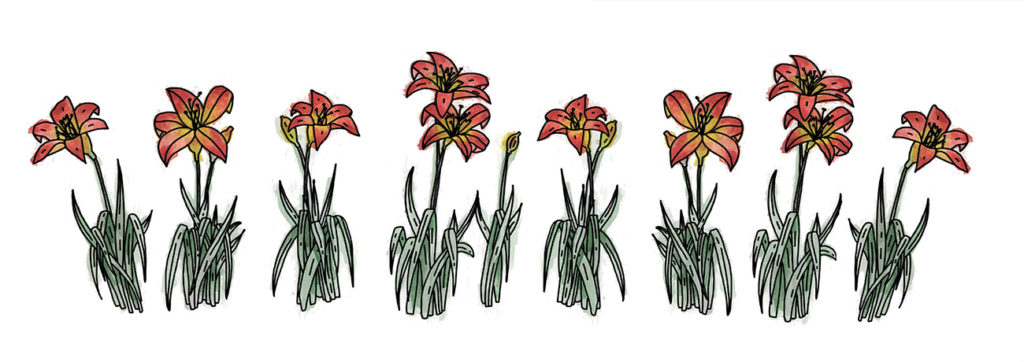
Excerpt from the book “They Call Me Orange Juice” by Audrey McDonald Atkins
There may come a time when you find yourself winding down a two-lane country road. And along that road you may see a field. And in that field you may see an odd grouping of bright flame-colored flowers.
Meet Hemerocallis fulva, otherwise known as the common orange daylily or roadside daylily. This tangerine titan of perennials is considered by some to be a weed, an invasive species. But weeds don’t grow in perfectly straight lines. And weeds don’t grow in the shape of corners.
You see, these daylilies mark the foundations where front porches once stood, where families lived, where generations were born and died. These rows are an attempt to bring beauty to a life that was probably not always beautiful and was more likely harder than the ground from which these blossoms erupt. The hardy nature of the daylily mirrors the hardy souls of country folk who would rather scratch out a living on their own ground than become beholden to another.
Granny loved the daylily and planted hundreds of different varieties around her home. Along with the common orange there were lilies with single, double, and spider petals, some with ruffles, some with “eyes.” Lilies in every color of the rainbow from the palest peach to purples so dark they were very nearly black. Lilies bearing names like “Daring Deception,” “Chicago Blackout,” and “Emerald Dew.”
There were daylilies that had been divided and traded for other varieties. Some were store-bought — ordered from catalogs and anxiously awaited. One was even a special hybrid cultivated by another local lily enthusiast as a gift to commemorate the birth of a granddaughter, me. We watched for buds to blossom, not wanting to miss a special showing that, twenty-four hours later, would become a soggy, wilted shadow of its former glory. We went out early to pick them for a special Sunday bouquet or to show off in the annual flower show.
Granny has been gone from us for many years now, but the lilies she cultivated so carefully continue to bloom with veracity, even in the face of South Alabama’s sun and heat, hurricane and drought. I’m sure their myriad colors still bring joy to those who gaze upon them. And I know that their blossoms will ever greet the morning sun long after we have joined Granny beyond the clouds.
And one day her carefully cultivated flower beds will be reduced to random patches of flowers by the road. Although its name means “beauty for a day,” there are countless years of history lost to books, lost to us, that are commemorated only by these lilies in fields. That is why this plain Jane perennial is no more a weed than the mighty oak. For even though its blooms may be fleeting, its rows will ever endure to mark a time in history that wood, stone, and mortar could not.
Born and raised in Citronelle, Atkins shares stories about growing up and living in the South in her book, “They Call Me Orange Juice,” and at her blog audreyatkinswriter.com.





